This post contains affiliate links (I get a commission at no extra cost to you for purchases made through links in this post).
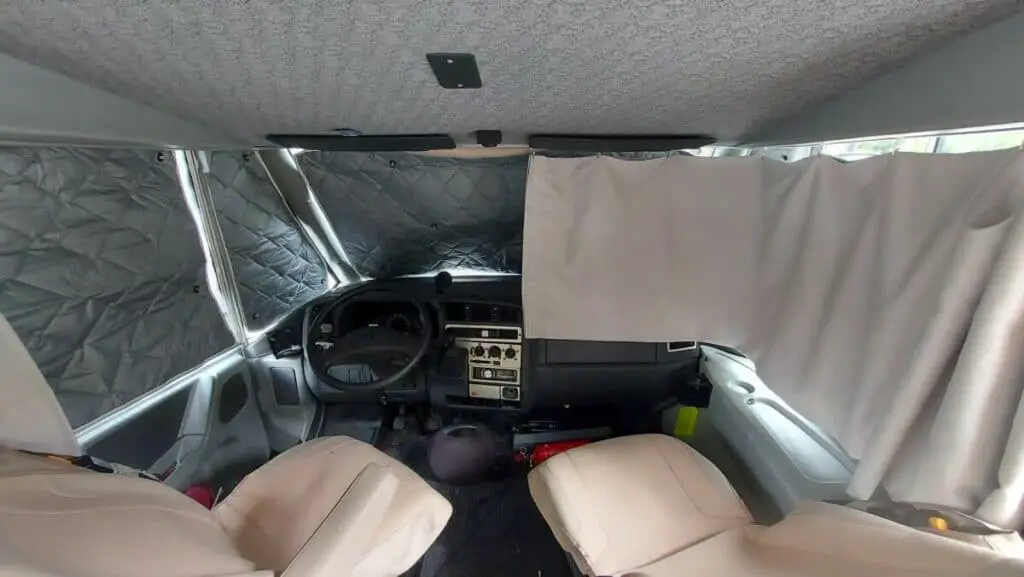
In this article, im going to share my knowledge and experience of a motorhome, RV, or caravan window insulation for winter living and the essential part, the windshield of your motorhome, and explain what I did during an entire winter in Norway.
To insulate a motorhome or RV windshield, you can use an insulation cover on the outside of the window; this avoids condensation on the inside. Putting insulation material to cover the inside of the windshield causes condensation. Using a thick curtain is also a good insulating layer.
The windshield is the most important window to insulate during winter.
When it comes to insulating windows in a motorhome during the winter, the windshield is the most important one since it is the largest window, and it is uninsulated compared to your other windows that already are double windows or two layers of plastic which have a section of air in between the two layers which already serves as insulation.
The Different Ways of Insulating a Motorhome Windshield For Winter
1. Insulating covers on the inside of the windshield:
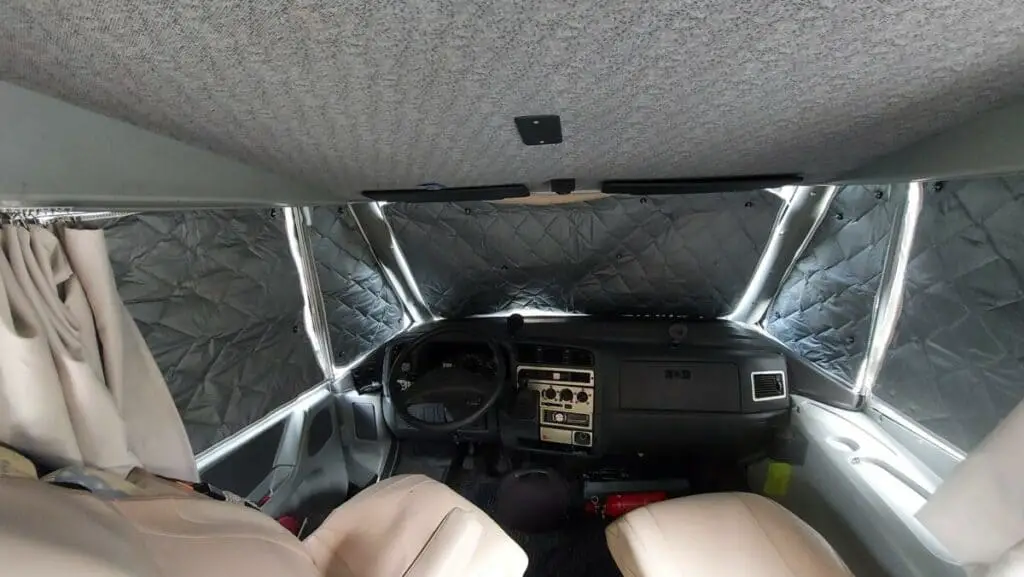
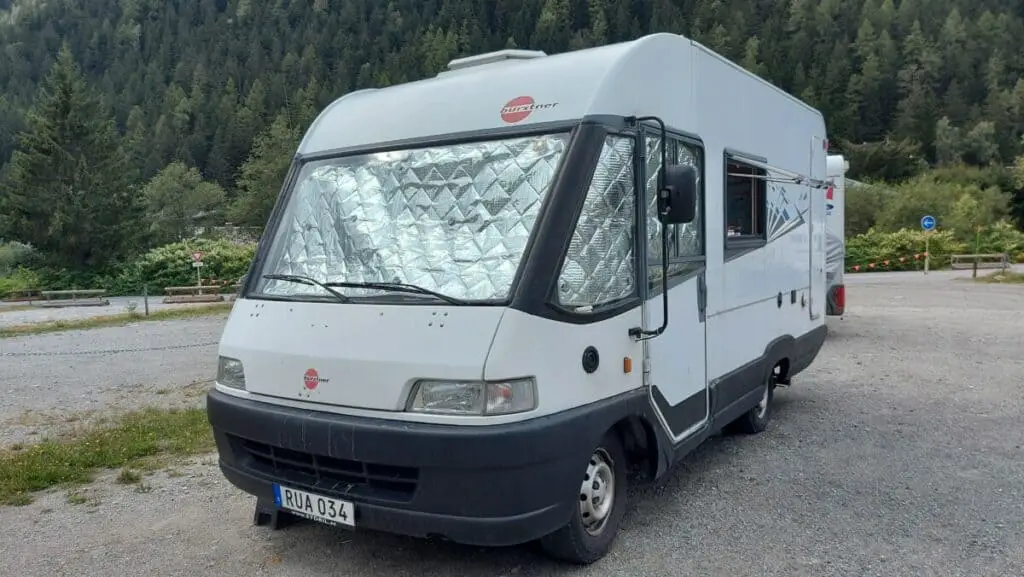
This is an easy solution that you can make yourself out of any insulating material you have or buy unique solutions. It is common to find DIY kits with a big piece of reflective insulation and suction cups so you can cut out the right size for your windshield and attach it to the inside of your windshield with the suction cups.
The best part about using this method is that you only need to attach an insulating material to the inside of your windshield, and anything you use will make it better!
Another PRO for this method is that you can put up and down the insulation from the comfort of being inside your motorhome in the winter, not having to go out and put on an outside cover during a snowstorm. Then, when you want a view in the morning, you can take it down as you please. And it is a very cheap way of getting good insulation and increasing the temperature inside.
One of the biggest CONS of using this method is that you will get condensation on the inside of the windshield that is going to drip down on your dashboard; a way to prevent this is to take down the insulation every morning and wipe away the condensation/water that has formed on the inside of your windshield. You also need a place to store the insulation covers when you are not using them.
2. Thick Windshield Curtains:
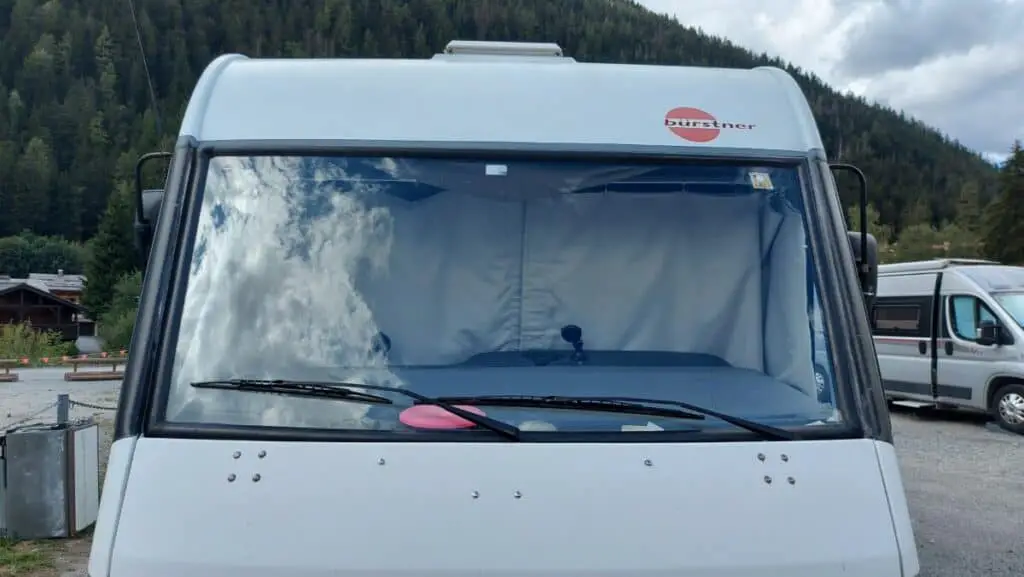
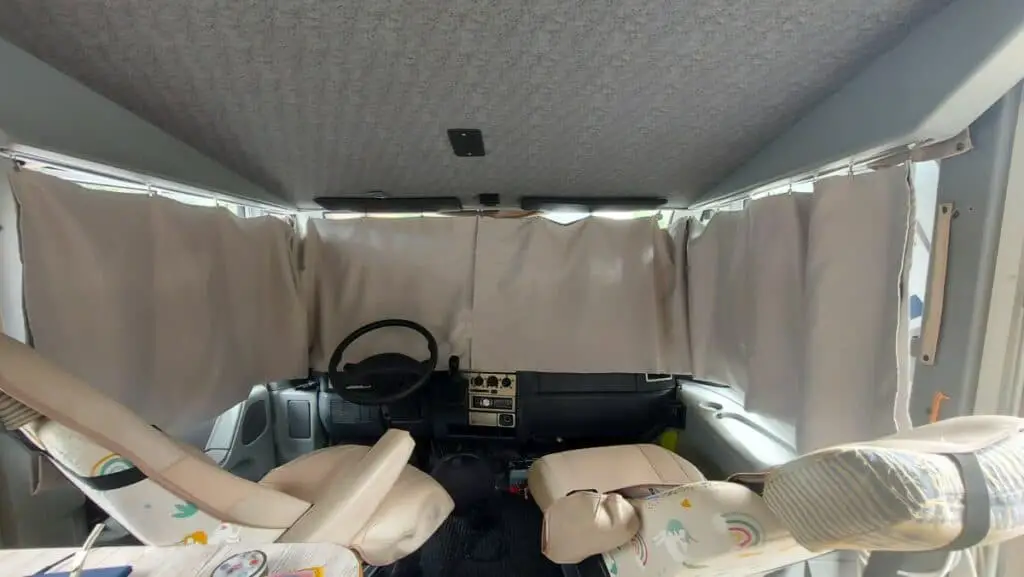
This insulates surprisingly well! It is common to have curtains or curtain holders on the roof going just around the windshield where you can hang your curtains to get more privacy or to get it darker when you sleep.
I use thick black-out curtains that are double folded here to get some extra insulation and simply because the sizes I found in the store were not made for motorhomes, but when folding it double, it came together perfectly!
PROs: another cheap trick to increase windshield insulation that you will need all year round to block out the sunlight when sleeping. And since the curtains are not in contact with the windshield and there is still air circulating between the curtain and the windscreen, there won’t be much condensation.
This solution should be combined with all other solutions or by itself; if you are only going to spend a couple of nights around 0 C or 32 F, this will be sufficient, same even if it would just be a couple of nights around -10 (14 F) but if you will do a bit more winter camping. Maybe at colder temperatures, I would recommend combining this with the above solution of having an extra insulation material that you put up on the inside of your windshield.
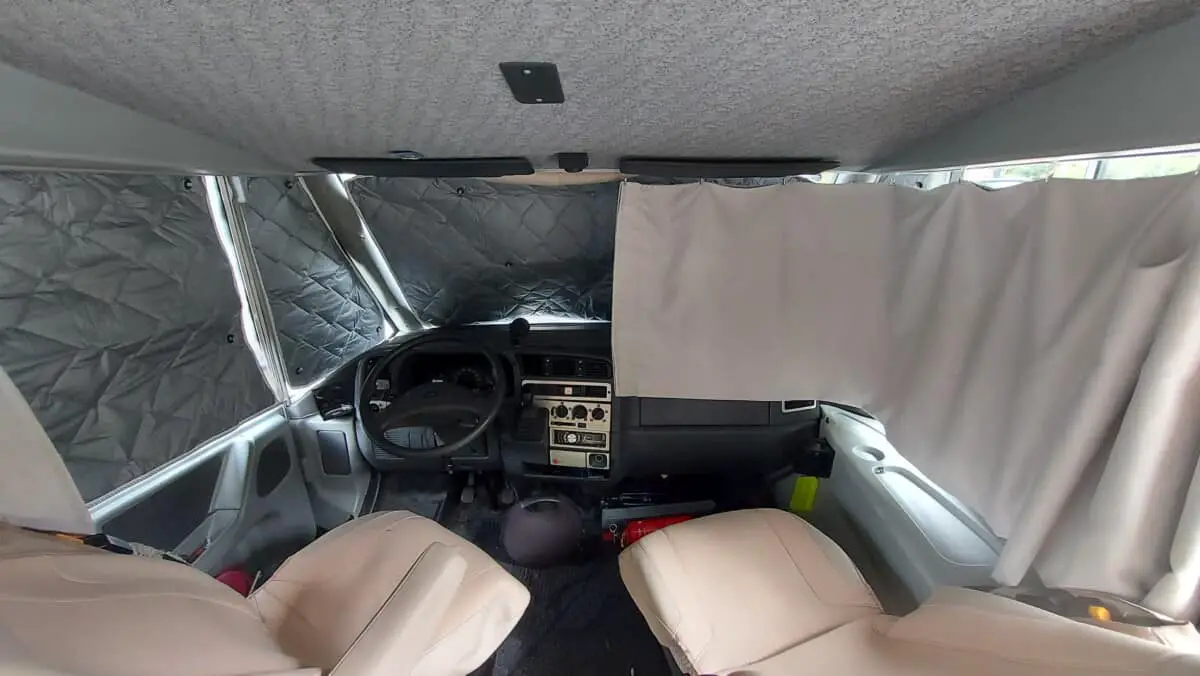
If you will do some severe winter camping at cold temperatures and quite often, I would recommend investing in an outside windshield cover.
3. Insulating cover on the outside of the windshield:
The best solution for hard-core winter campers!
The best way to insulate your motorhome’s windshield is by using a custom-made cover that goes on the outside of your windshield; these covers can also cover your door and sometimes even the whole front of your motorhome.
By having the cover on the outside, most of the condensation will form between the cover and the outside of the windshield, so there won’t be water to wipe away every day. Another great thing is that your windshield will always be free of ice and snow when you take off the cover.
The major CONs about using this outside cover is that they are usually much more expensive, at least a couple of hundred bucks, it takes a lot of space, and you need to put it on and take it off from the outside, which can be a bit of a process. Hence, it is more difficult to regulate when you want some sunlight coming through the window, but some have a small “sun hatch” that you can more easily open/close.
The outside covers have the correct measurements for some models, but you usually need to order them for your model and its unique measurements; since the outside covers need to be attached well so they don’t get loose and fly off, there are a bit more requirements for those.
The most famous outside winter covers for motorhomes in Europe are the MASA covers from a small shop in Finland where they are all hand-made with the best materials; I ordered one of those covers at the beginning of last winter, but since they had so much to do and a long queue I would only have received it at the end of the winter.
I ended up canceling the order, and instead, I used a DIY inside cover in combination with curtains; that worked well enough, but I would have enjoyed that proper MASA outside cover last winter.
Pros and Cons Of Insulating Motorhome Windshield
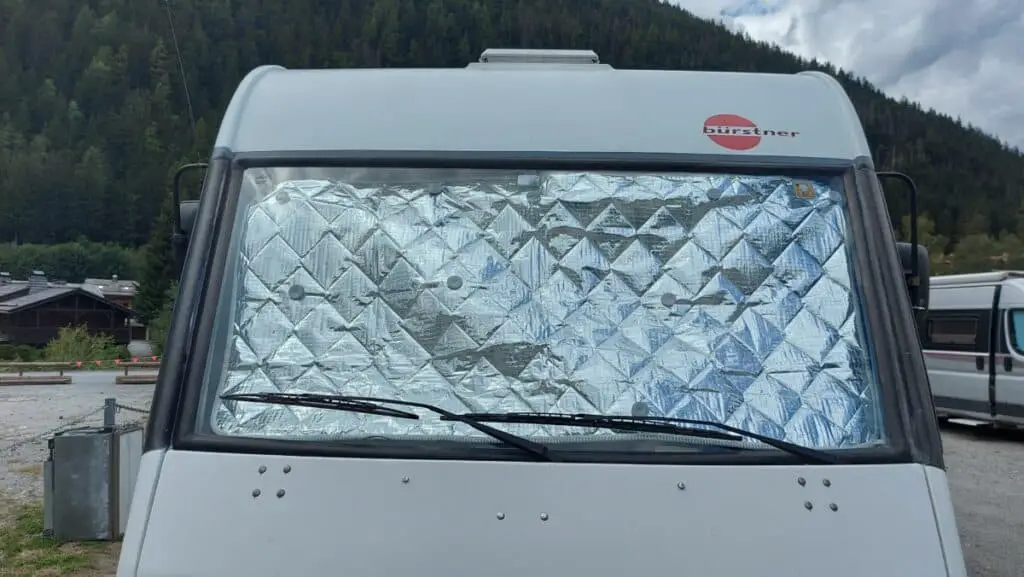
PROS:
You will get a much more even temperature inside your motorhome or RV if you insulate the windshield since the front area of your motorhome now also have a chance to get warm instead of constantly cooling down due to the windscreen being cold.
You will be able to get higher temperatures inside your motorhome when it is cold outside; having a nice warm and cozy motorhome even when it is -20 C (-4 F) or colder is worth a lot, in my opinion!
You will save money on propane, diesel, or electricity, whatever means you are heating your motorhome with you won’t need as much since the heat will stay inside for a more extended amount of time, so the heater won’t need to work as much.
If you use propane, the bottles will last longer, so you won’t have to change them so often.
If you are curious about how much money it costs to heat your motorhome, RV, or caravan during the winter, whether you are using propane, electricity, or diesel, you should check out my other article, where I go through the costs and fuel consumption to stay warm in the winter, with my references from an entire winter in Norway.
CONS:
Hmm.. this will be more difficult.
You need to make or buy the insulation solution you want to use, which could be pretty annoying to find one that fits well. And you need to put it up and down most days and have a place to store it, which could be challenging to find if you have a smaller van or motorhome.
Depending on how you insulate the windshield, you will have condensation/water on the inside of your front window.
Should I Insulate The Smal Windows On a Motorhome (RV) in Winter?
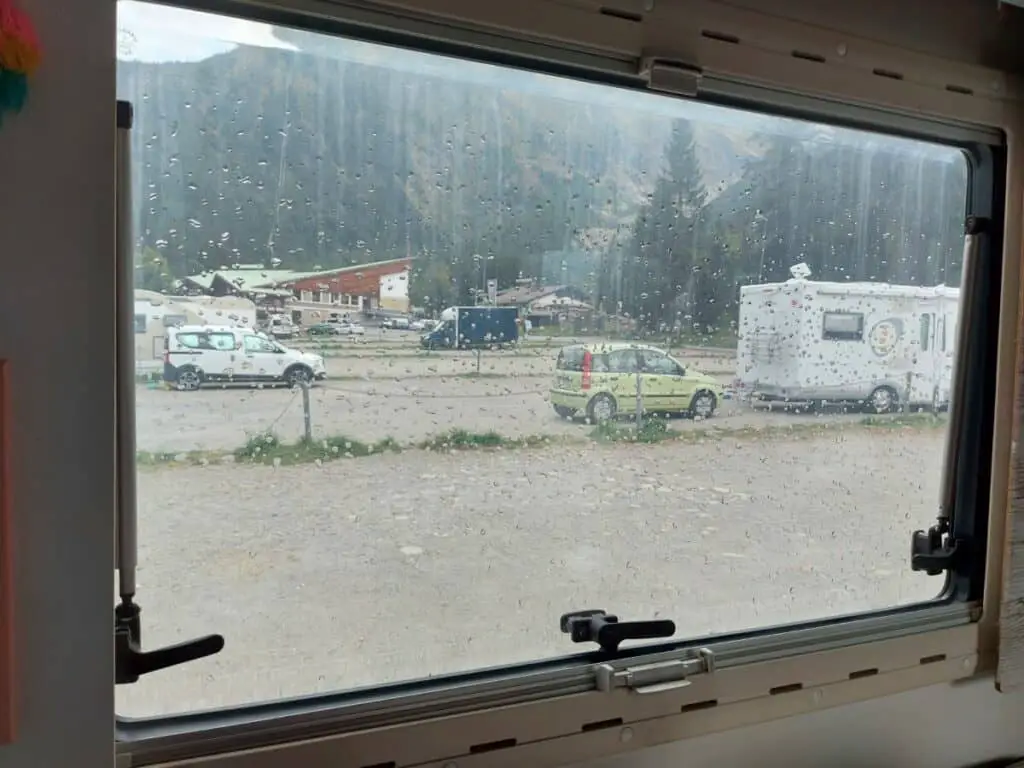
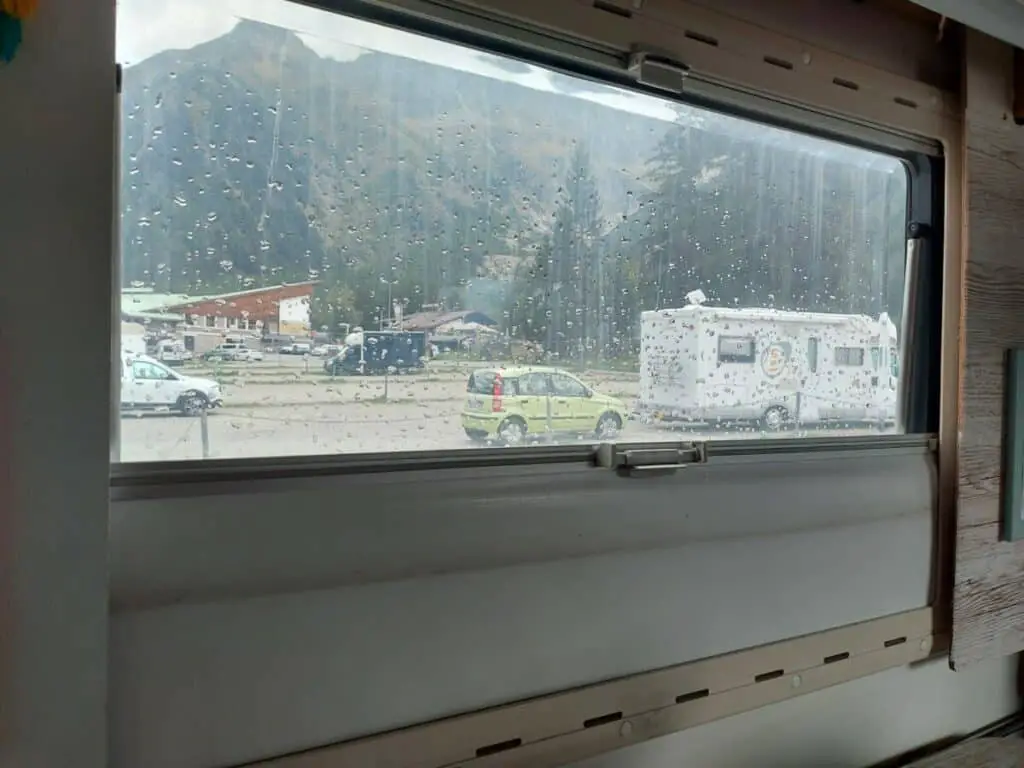
The windows in a motorhome, RV, or caravan typically consist of two layers of plastic; between those is the air that insulates. Generally, inside the windows is a cover/shade that you can use as a second insulation layer; add another curtain. This is sufficient insulation, so in most cases, you don’t need to insulate your small windows.
On the other hand, the motorhome’s windshield only has one layer of glass, so this is not insulated, and it is also huge, so this one is worth spending more time, effort, and money on insulating during the winter compared to the small ones.
Remember that when you add an insulation cover on the inside, you will get condensation between the cover and window, so if you do this, wipe off the condensation/water once/per day or take off the cover during the day. The same goes for when you use the shade covers; open them daily to ventilate the condensation.
Instead of worrying about your smaller windows, I recommend looking through your motorhome to see if any water pipes will freeze or if you don’t have an insulated grey water tank. Then, looking into how you will make that work during the winter, Those links are to articles I have written covering those subjects.
